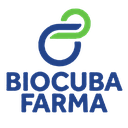Executive Secretary

VIII International Symposium on Chemistry and Pharmaceutical Sciences
SIIQ
XIII Conference "Chemical Engineering: Development, potentials and challenges"
Abstract
Adjuvants are substances that are used in human vaccines to enhance the immune response through physical or chemical association with antigens. Among these, aluminum salts have served as immunostimulants for decades and in this group, aluminum hydroxide is the most widely used. This research aims to obtain aluminum hydroxide for use as a vaccine adjuvant. A statistical study 22 was designed to define the synthesis process on a laboratory scale, evaluating the variation of the addition flow of the sodium carbonate solution and the stirring speed of the mixture, assessing the behavior of the adsorption capacity as a response variable. The results indicate that the highest value of adsorption capacity was obtained with the combination of the lowest level of flow and the highest level of agitation. The corresponding analysis techniques were applied to evaluate the quality of the gel, where it was verified that batches obtained in the best conditions met the quality specifications established for use as adjuvant and were similar to commercial Alhydrogel® in terms of particle size and polydispersity index. The economic analysis of the process demonstrated the need to expand production capacity to increase overall yield, meet national demand for vaccines, and reduce production costs.
Resumen
Los adyuvantes son sustancias que se utilizan en las vacunas humanas para potenciar la respuesta inmune a través de la asociación física o química con antígenos. Dentro de estos, las sales de aluminio han servido como inmunoestimulantes durante décadas y en este grupo, el hidróxido de aluminio es el más empleado. Esta investigación tiene como objetivo obtener hidróxido de aluminio para uso como adyuvante vacunal. Se diseñó un estudio estadístico 22 para definir el proceso de síntesis a escala de laboratorio mediante la evaluación de la variación del flujo de adición de la disolución carbonato de sodio y la velocidad de agitación de la mezcla, valorando el comportamiento la capacidad de adsorción como variable respuesta. Los resultados indicaron que el mayor valor de capacidad de adsorción se obtuvo con la combinación del nivel más bajo de flujo y más alto de agitación. Se aplicaron las técnicas de análisis correspondientes para evaluar la calidad del gel, donde se comprobó que lotes obtenidos en las mejores condiciones cumplieron con las especificaciones de calidad establecidas para su uso como adyuvante y fue similar al Alhydrogel® comercial en cuanto a tamaño de partícula e índice de polidispersión. El análisis económico del proceso demostró la necesidad de ampliar la capacidad productiva para aumentar el rendimiento global, satisfacer la demanda nacional de vacunas y reducir los costos de producción.
About The Speaker

Ing Andrea Yara

Discussion




